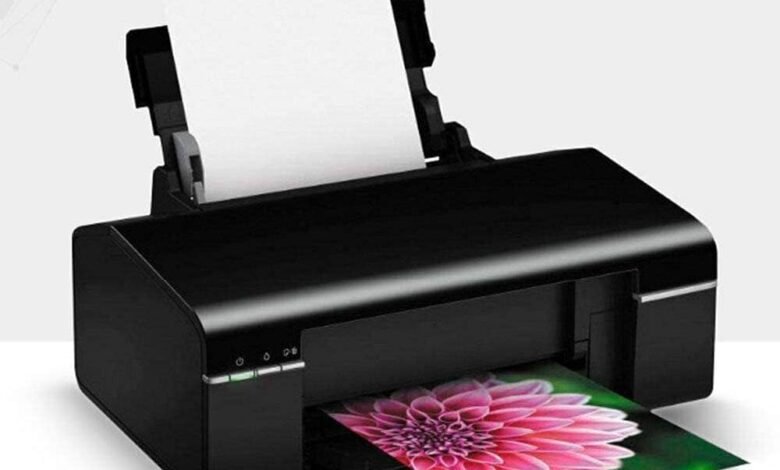What Factors Matter When Selecting Printer Inks?

Selecting the right ink for a printer can sometimes feel overwhelming. With so many options available, how does one decide? If you’re wondering how to choose ink for a printer, this article is designed to clear the confusion. You will explore the crucial factors you should consider. This knowledge will ensure that you select the best ink for your needs without compromising quality or efficiency.
Understanding Different Types of Inks
Before diving into the selection factors, it’s essential to have a basic understanding of the different ink types available:
- Dye-Based: These inks are water-soluble and deliver vibrant colors. They’re often used for photo printing but may fade faster when exposed to sunlight.
- Pigment-Based: Comprising tiny, encapsulated particles on top of the paper, these inks are more resistant to water and sunlight and last longer than dye-based inks.
- Solvent: Typically used for outdoor graphics, these inks adhere well to many surfaces but might release harmful fumes during printing.
- Latex: Produced from a combination of water, latex polymer, and pigments, latex ink printers provide durability and eco-friendliness, making them a popular choice for various applications.
Factors to Consider When Choosing Printer Inks
With a clear picture of the various ink types, let’s explore the factors to consider when choosing.
1. Purpose of Printing
The type of projects you undertake will heavily influence the ink you select. For instance, if you’re primarily printing photographs, you might opt for dye-based inks for their vibrant output. On the other hand, solvent or latex inks could be more appropriate for long-lasting outdoor banners or signs.
2. Durability Needs
Consider how long you need the print to last. If it’s a document that will be filed away and seldom seen, durability might not be a top priority. However, for items like outdoor signs or canvases, you’ll want inks, such as pigment-based or latex, that can withstand elements like water and UV rays.
3. Compatibility with Printer
Not all inks are compatible with all printers. Before purchasing, always check that the ink you’re considering is suitable for your printer model. Using incompatible inks can lead to poor print quality and even damage the printer.
4. Environmental Concerns
If sustainability and environmental impact concern you, pay attention to the type of ink you select. Latex inks, for instance, are eco-friendly and don’t emit harmful fumes. This consideration can be particularly crucial for businesses aiming to reduce their carbon footprint.
5. Cost Implications
While it’s tempting to go for the cheapest option, it’s essential to consider the long-term costs. Cheaper inks might not provide the same quality or longevity, leading to frequent replacements. Conversely, more expensive inks might offer better quality and durability, resulting in savings over time.
6. Color Vibrancy and Accuracy
The clarity and accuracy of colors can make a world of difference in the final print. Some inks, like dye-based options, are known for their vivid output. However, if you require precise color matching for branding or other professional needs, ensure the ink can deliver in this aspect.
7. Safety and Health Concerns
Some inks, especially solvent-based ones, might emit fumes that are harmful when inhaled. If you’re working in an enclosed space or health and safety are priorities, consider inks that are non-toxic and don’t release noxious odors.
8. Refillability and Ease of Use
Some printer models and ink types allow for easy refilling, which can be a cost-effective solution for frequent users. Refilling cartridges can be more environmentally friendly, as it reduces waste. However, ensure that refilling won’t compromise the print quality or damage the printer.
9. Dry Time and Smudging
The speed at which ink dries can be crucial, especially for businesses with high-volume printing needs. Faster drying inks reduce the risk of smudging, which can be essential for professional-quality outputs. On the other hand, a longer drying time might be beneficial if you’re using the prints for crafts or projects where the ink needs to remain wet for a bit longer (like stamping).
10. Resistance to External Factors
Beyond just water and sunlight, think about the environment where the printed material will be placed. Will it be exposed to chemicals, high humidity, or significant temperature fluctuations? Some inks are formulated to resist external factors like oils, chemicals, and extreme temperatures.
11. Special Requirements
If your printing projects have unique requirements, such as metallic finishes, glow-in-the-dark effects, or other specialty needs, there are inks tailored for these specific outcomes. Ensure the ink meets these specialized requirements without compromising other aspects like durability or color accuracy.
12. Feedback and Reviews
Before finalizing your ink choice, checking reviews and feedback from other users can be beneficial. Real-world experiences can provide insights into the ink’s performance, potential issues, and overall satisfaction.
Final Thoughts
In the journey of figuring out how to choose ink for a printer, it’s essential to consider various factors carefully. By understanding the types of inks available and weighing them against your specific needs, you’ll be better equipped to make an informed decision. Always prioritize quality, compatibility, and sustainability for personal use, professional projects, or business needs for the best outcomes.




